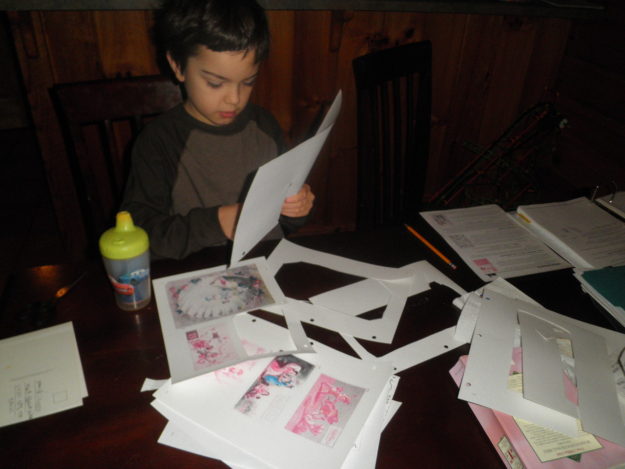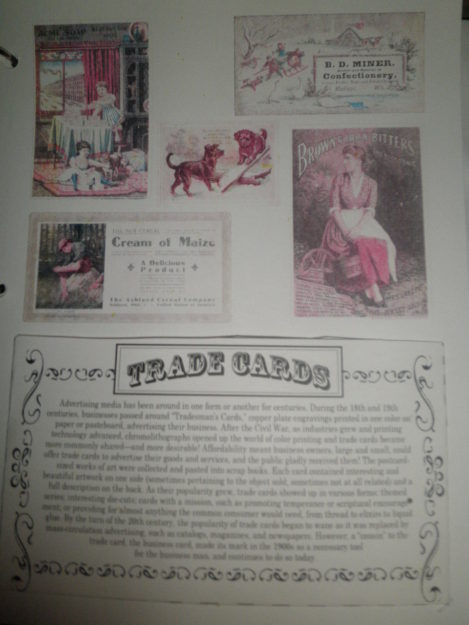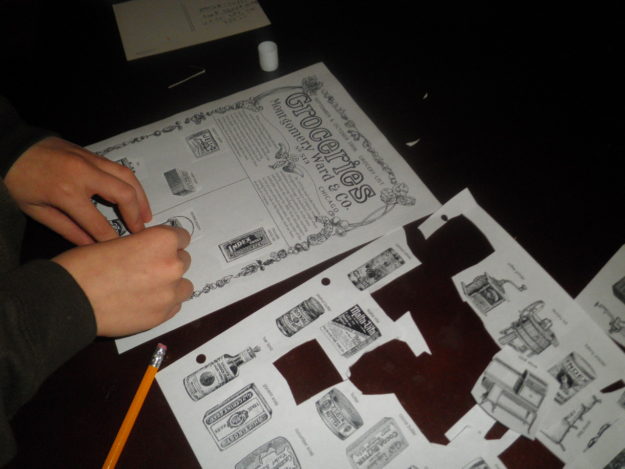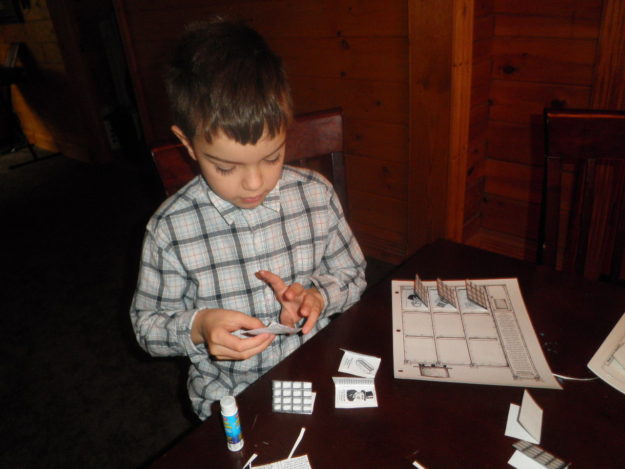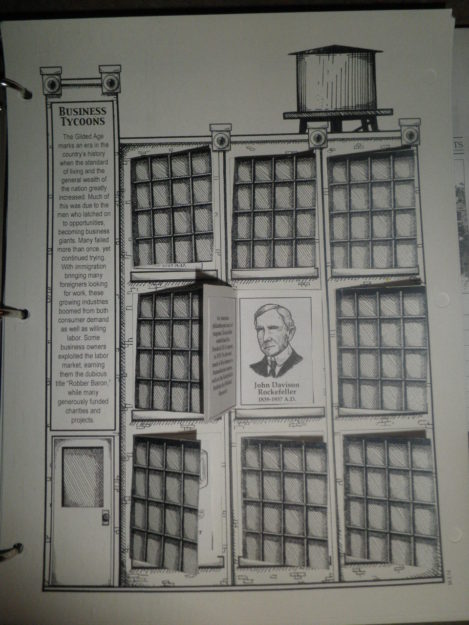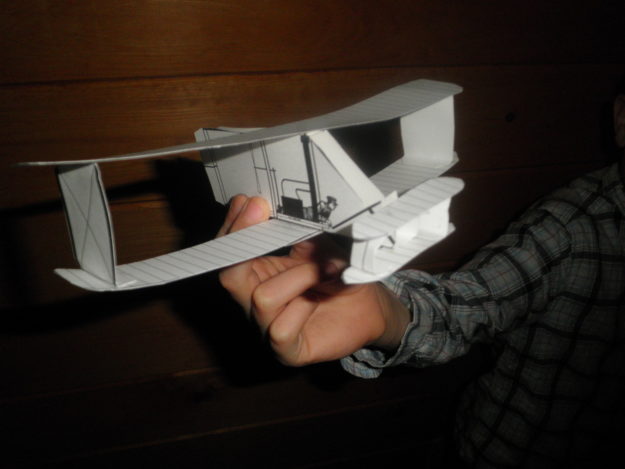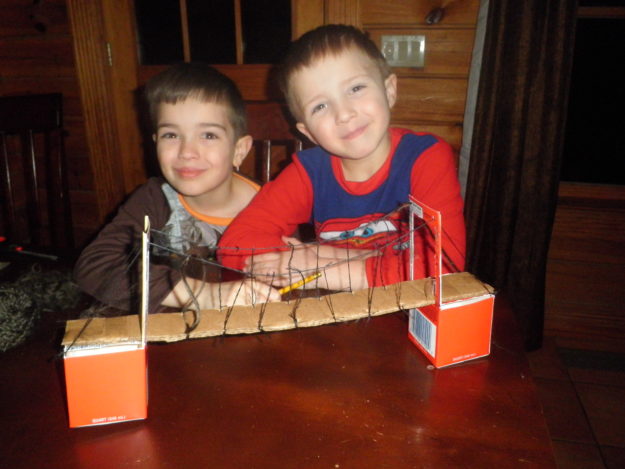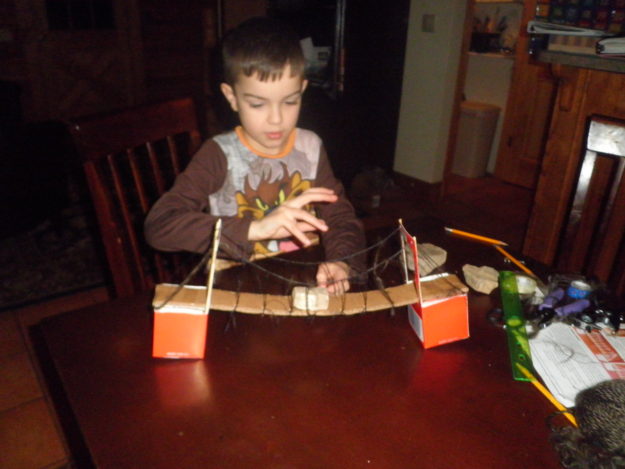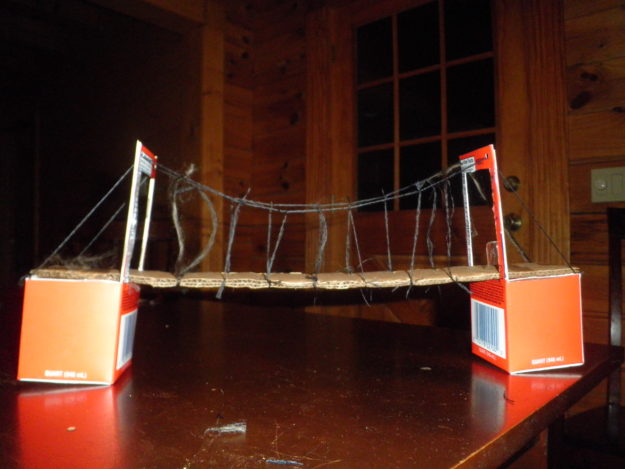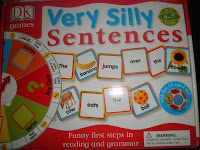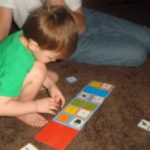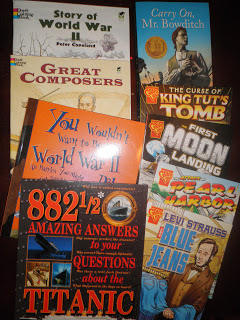After completing a small project on the “Indian Wars” and recalling some of the activities we did over the summer in studying Native Americans (and especially Geronimo), we took a look at advertising at the turn of the 20th century through Homeschool in the Woods (HSITW) Industrial Revolution through the Great Depression activities.
We created “Tradesman’s Cards,” which are similar to postcards but have advertisements on the back and were collected by many people during this time period.
We added a grocery sales flyer to go into our “Industrial Times” newspaper project, which gave us a glimpse into the packaging and prices for items such as Jell-o and flour.
Moving on to our history tie in for this week, we completed the Business Tycoons activity, learning about people such as Rockefeller, Carnegie, Hershey, and J.C. Penney. Some sources say that Carnegie ended up giving away 90% of his fortune. He also built nearly 3,000 libraries in addition to all the other charities and projects he funded. Rockefeller also gave away a good portion of his wealth as well!
As we took a look at famous inventors and their inventions, we created a Wright Brothers “Flyer” but could not get it to fly for even 12 seconds, much less 60!
Continuing with great inventions, we discovered that Brooklyn Bridge was the longest suspension bridge in the world from its opening in 1883 until 1903. The original mastermind behind the project, John A. Roebling, died from infection caused by an accident in which his toes were crushed on the construction site. The bridge was proven strong to the skeptics when P. T. Barnum led a herd of elephants from end to end across the bridge. To better understand how suspension bridges work, we made one and tested various loads.
We also added to our Bridges lapbook, but I decided to do something a little different in presentation. I love the timeline that Amy Pak designed for the Industrial Revolution through the Great Depression project pack, so I followed the model to create a modified lapbook to place in our notebooks at the close of this unit.
How to make: Trim about 1/2″ off of 4 pieces of cardstock. Hole punch one additional piece of cardstock (full size). Tape end to end, leaving approximately 1-2 mm of space between each page so that the pages will lie flat when you accordion fold them.
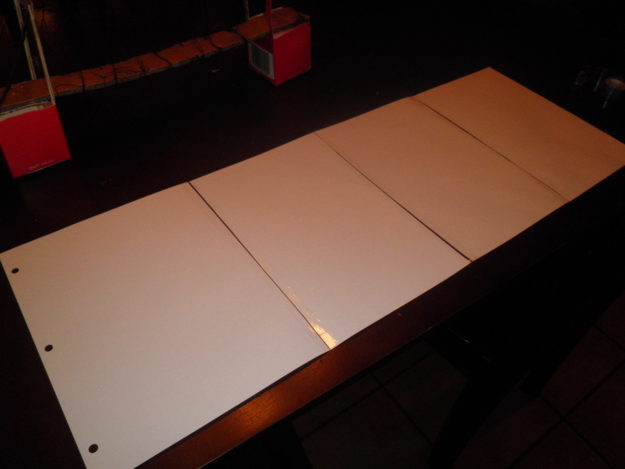
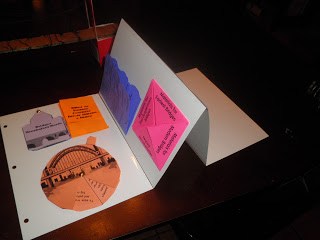
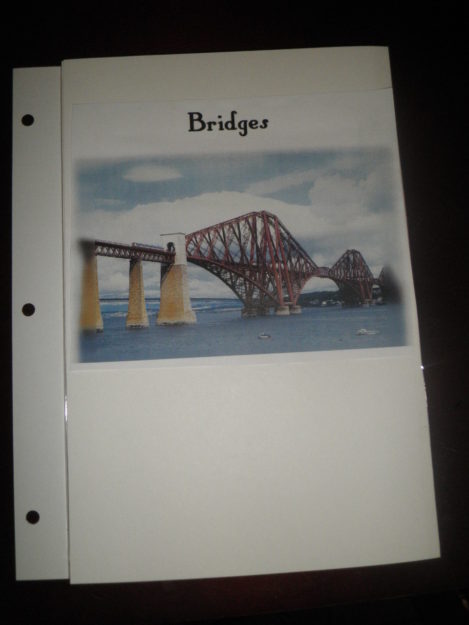
Ta-da! It will now fit nicely in our notebook!
I really love the tidiness of it, and both the Bridges Lapbook and Titanic Lapbook we’ve been working on can be stored with the rest of our studies for this time period.
At Marshall’s this week, I found a Game Called Very Silly Sentences. All of our boys like this game (of course Levi does not know his parts of speech yet, but he loves looking at the cards and asking, “What’s this say?”). By playing this game, we reviewed English grammar (nouns, adjectives, prepositions, verbs) and talked about the present tense of the verbs used (and how to change the verbs to the other principle parts). Stephen loved this, and it helped us to review English grammar concepts in a fun way! We even did Question Confirmation on the sentences we were making, talked about the types of sentence patterns we had to choose from (there are only two sentence patterns available in this game), and how we could make additional mats to create the other sentence patterns. We noticed that there were no adverbs in this game, but Stephen then discovered that one of the sentence pattern mats had an adverbial phrase. Boy, was I delighted! All this on a Saturday, too!
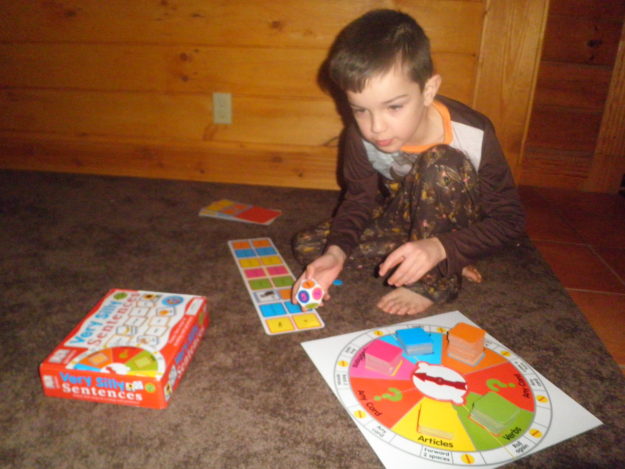
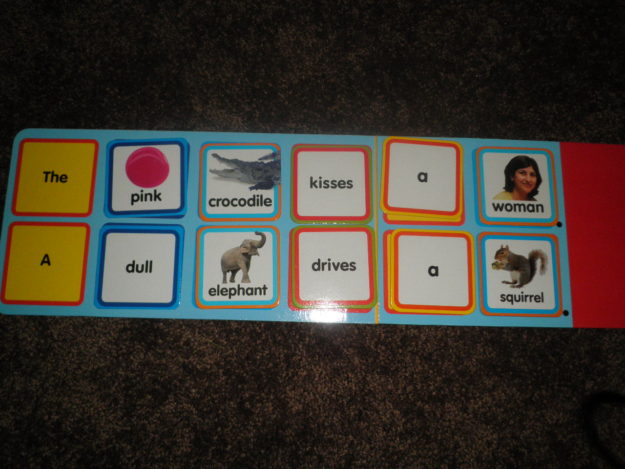
Stephen and David just laughed and laughed at the sentences they were making while Levi just matched the color of the cards.
And finally, we had another shipment of books come in for our mid-year boost. The day they arrived, we spent the entire day reading.
Not only that, but now Life of Fred (click here for samples) has arrived, providing us with a Living Math Book series that is just wonderful! Stephen is also trying Christian Light Education’s (CLE) Math series while David continues working in Saxon 1 (If it ain’t broke, don’t fix it!). David also loves his math manipulatives and even presented this week on all the ways he could make 10 with the Math-U-See blocks. And thus far, Stephen likes CLE, especially because he is rewarded with activity/puzzle sheets, and since he loves working in books like Mathmania, this is a great incentive for him. (If you wish to take a look into this program, you can click on your child’s grade level and download a sample from each booklet. You can also download the entire scope and sequence for CLE along with a placement test, both of which are helpful tools in selecting the appropriate level.) We are also using Calculadder now, and for the first time EVER, Stephen is not apprehensive about a timed drill. If anyone else has ever struggled with finding math curriculum (and you don’t have money to experiment around), most curricula have downloadable samples so that you can review it and even try it out on your child(ren). And I read math curriculum reviews to infinity and beyond, and I finally came to a profound conclusion. Every child and parent is different. (Well, Duh!!!)
And, of course, if you’re interested in some activities you can do that correlate directly with History, Science, or Fine Arts, go to this Resources Page.

